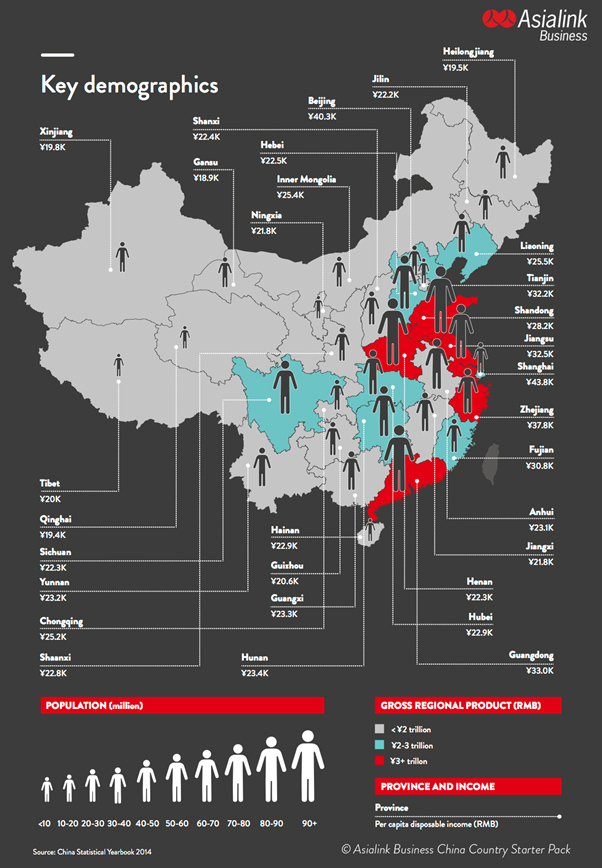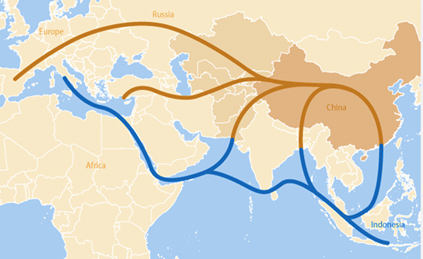-
China's One Belt One Road (OBOR) is an ambitious strategic, political and economic initiative with the potential to create a new model of growth from Asia to the Middle East and Europe. Combined, the land and maritime belt and road will involve more than 65 countries, 60 per cent of the world's population and nearly half of global GDP.
" [The OBOR] will involve more than sixty five countries, sixty per cent of the world's population and nearly half of global GDP."
Mukund Narayanamurti, CEO of Asialink Business, Australia's National Centre for Asia CapabilityWhile much of the detail is still taking shape, what is clear is the initiative will require substantial skills in sectors in which Australia has already developed global strengths, like infrastructure, construction and services.
The potential for Australian businesses to get behind this initiative and embrace the opportunities as they take shape should not be overlooked.
{CF_IMAGE}
MORE THAN A MODERN SILK ROAD
Since Chinese President Xi Jinping announced the strategy in late 2013, it has often been characterised as the 'modern Silk Road.' Both the ancient and modern Silk Roads have deep trading routes at their core but the contemporary vision for the Belt and Road is far more expansive.
On land, the initiative will encourage economic growth in China's vast, less developed and less populated west. It will encompass a series of economic corridors stretching from China to Russia and Europe, across Central and West Asia, and from China to South and South East Asia.
At sea, the maritime road will increase seaborne traffic from East Asia and connect major ports along the land belt. It will link China with the African coast, and through the Suez Canal, with Mediterranean Europe.
{CF_IMAGE}
For a region all too familiar with the challenges of infrastructure development, the OBOR is an ambitious endeavour. China has been working hard to back up its vision with significant financial firepower.
The Asian Infrastructure Investment Bank (AIIB), formed in 2015, commits $US100 billion in funding to regional infrastructure. China has also established the $US40 billion Silk Road Fund, and funding from the New Development Bank, launched by the BRICS countries (Brazil, Russia, India, China, and South Africa) in 2015, may also be at the OBOR's disposal.
MORE THAN ECONOMIC DIPLOMACY
This substantial funding will undoubtedly be welcomed warmly by economies in Central and Western Asia and Africa seeking investments in infrastructure. But the OBOR is motivated by more than Chinese economic diplomacy and foreign power.
China's domestic growth has slowed from highs of over 10 per cent in recent decades to current forecasts closer to 7 per cent. The OBOR is a strategic plan to encourage more Chinese firms to seek out new markets and investment opportunities across Eurasia.
The OBOR will also stimulate China's domestic economy by ensuring overcapacity in various industries (such as steel, cement, and aluminium) is exported.
The logical question most Australian businesses ask is 'is Australia part of the Belt and Road?'
At a recent business forum in Melbourne organised by Asialink Business and Corrs Chambers Westgarth, an advisor to the Chinese government on the OBOR, Professor Liang Haiming, gave a resounding 'Yes' to this question.
Australia is encouraged to participate in the initiative. What is needed is to find a meeting point of interests based on “each countries comparative advantages" and “pragmatic bilateral cooperation," he said.
HARD AND SOFT OPPORTUNITIES
To make the land belt and maritime road a reality, significant capabilities in infrastructure, construction, logistics and transport and related services will be required.
Australian-developed world class expertise in these 'hard' capabilities during the resources boom, and Australian businesses may now have new potential to export these skills when key OBOR projects are identified.
These opportunities extend far beyond these 'hard' industries: the OBOR is also about people-to-people and cultural connectivity, not just rail, roads and ports. In Professor Liang Haiming's words, “economic collaboration and cultural exchange are the two wings of the Belt and Road initiative."
Collaboration on education may be one such key enabler of the cultural and people-to-people connectivity the OBOR aims to create.
Haiming said cross-border cooperation in education and training was one pillar of this 'second wing' where Australia could be well-positioned to assist.
He said over 11,000 Chinese enterprises had invested in the countries along the Belt and Road. But investment in cooperatively run schools had been limited and there was “great potential" for Chinese-Australian joint ventures in education.
This year could see significant milestones in the OBOR's evolution. The business forum heard this year, China will work to sure-up the initial list of key projects, confirm collaborating countries and set the overall direction of the initiative.
Participating in collaborative joint ventures throughout the region may require a shift in mindset from many Australian businesses, along with the need to develop new Asia capabilities.
The scale, ambition and potential of the OBOR should provide businesses with the necessary incentives to embrace a global mindset and develop the critical individual and organisational capabilities essential to succeed in Asia.
Mukund Narayanamurti is the CEO of Asialink Business, Australia's National Centre for Asia Capability.
Asialink Business hosted a visiting delegation of advisors to the Chinese government on the OBOR on February 22.
The views and opinions expressed in this communication are those of the author and may not necessarily state or reflect those of ANZ.
-
-
EDITOR'S PICKS
-
The China-led Asian Infrastructure Investment Bank (AIIB) has become a focal point in global media headlines as some key European nations break ranks with the US and join up. Still, given its size and its newcomer status, the AIIB is unlikely to usurp existing organisations like the World Bank in the eyes of the world.
26 March 2015 -
The Chinese central bank's surprise decision to fix the Renminbi (RMB) below its last closing price serves as a statement on softening monetary policy which will place more pressure on the country's already heavily sold equity market.
7 January 2016


